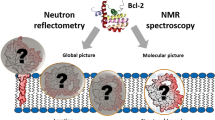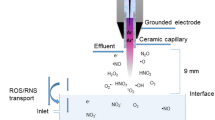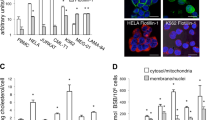Abstract
Previous studies on intact cells have shown that bryostatin 1 (Bryo 1) induces significant alterations in the membranes of WSU-CLL cells (a drug-resistant B-CLL cell line), changes which may play an important role in the mechanism of reduced drug resistance of B-CLL cells to 2-chlorodeoxyadenosine (2-CdA). However, it is not clear whether the plasma membranes or the mitochondria, or both are involved; nor is it known which of these two targets is more important for regaining the cells former drug sensitivity. For the present study, we treated WSU-CLL cells with Bryo 1, isolated plasma membranes and mitochondria, and then subjected the purified fractions to infrared (IR) spectroscopic and chromatographic analyses. IR spectroscopy revealed a decreased glycosylation of both plasma membranes and mitochondria in Bryo 1-treated cells compared to untreated cells. The amount of lipid relative to protein was increased in both types of membranes, but considerably more enhanced in the plasma membrane fraction of the Bryo 1-treated cells than in mitochondria. Quantitative lipid analysis by thin layer chromatography also revealed that Bryo 1 treatment significantly increased the phospholipid content in plasma membranes, whereas the lipids in the mitochondria remained essentially unchanged. Changes in lipid composition were quite dramatic for plasma membranes where phosphatidylcholines were decreased by 50%, phosphatidylethanolamines doubled and sphingomyelins increased five-fold compared to the lipid composition in plasma membranes of untreated cells. In addition, the IR spectroscopic analysis provided evidence for an increased plasma membrane fluidity in Bryo 1-treated cells, whereas the fluidity of the mitochondria remained essentially unchanged; marker bands indicating mitochondrial DNA decreased upon Bryo 1 treatment. These results suggest that Bryo 1 increases the sensitivity of WSU-CLL cells to chemotherapeutic agents such as 2-CdA by action on two cell targets: (1) introduction of significant changes in plasma membrane permeability or fluidity through modifications in lipid content and composition as well as by reducing the surface glycosylation; (2) introduction of changes in lipid and DNA content of the mitochondria. Small alterations in the lipid composition of the mitochondria may provide the conditions for an altered proton gradient and transmembrane potential leading to apoptosis and decreased cell survival.
This is a preview of subscription content, access via your institution
Access options
Subscribe to this journal
Receive 12 print issues and online access
$259.00 per year
only $21.58 per issue
Buy this article
- Purchase on Springer Link
- Instant access to full article PDF
Prices may be subject to local taxes which are calculated during checkout
Similar content being viewed by others
Author information
Authors and Affiliations
Rights and permissions
About this article
Cite this article
Liu, K., Schultz, C., Johnston, J. et al. Infrared spectroscopic study of bryostatin 1-induced membrane alterations in a B-CLL cell line. Leukemia 13, 1273–1280 (1999). https://doi.org/10.1038/sj.leu.2401463
Received:
Accepted:
Published:
Issue Date:
DOI: https://doi.org/10.1038/sj.leu.2401463
Keywords
This article is cited by
-
Fourier transform infrared spectroscopy for the distinction of MCF-7 cells treated with different concentrations of 5-fluorouracil
Journal of Translational Medicine (2015)
-
Fourier transform infrared microspectroscopy as a diagnostic tool for distinguishing between normal and malignant human gastric tissue
Journal of Biosciences (2011)
-
Application of multivariate data-analysis techniques to biomedical diagnostics based on mid-infrared spectroscopy
Analytical and Bioanalytical Chemistry (2008)
-
Monitoring all-trans-retinoic acid-induced differentiation of human acute promyelocytic leukemia NB4 cells by Fourier-transform infrared spectroscopy
Leukemia (2003)
-
Bax expression correlates with cellular drug sensitivity to doxorubicin, cyclophosphamide and chlorambucil but not fludarabine, cladribine or corticosteroids in B cell chronic lymphocytic leukemia
Leukemia (2002)



